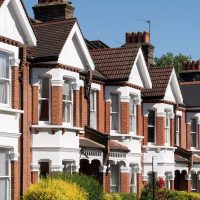
Estate agency comparison website GetAgent analysed house price data from the Office of National Statistics (ONS) Middle Layer Super Output Area (MSOA) – a government classification of different areas of a city – for year ending December 2008 to year ending December 2018.
The firm then compared the average house price change for these regions, which are similar in size to a post code area, over the last decade.
GetAgent’s research revealed the 023 area of Liverpool has seen the biggest drop in value, approximately five per cent greater than the next worst MSOA, Bradford 044, which has experienced an average house price fall of 39 per cent from £125,514 to £76,034.
Hartlepool 005 is in third place at a 38 per cent fall, as the average house price in the area has dropped from £97,532 in 2008 to £60,338.
County Durham sector 036 follows with a drop of 37 per cent, before the 060 area of Liverpool with an average house price decline of 37 per cent.
Two areas of Bradford, two in Middlesbrough and one from Sunderland complete the ten biggest fallers.
Capital growth
On the other hand, London has seen an increase in house prices since the financial crisis.
The top 10 best MSOAs for house price growth are all located in London, with Camden 022 leading at 390 per cent. This growth has seen the average house price for the area rise from £308,080 to £1,509,051 over the last decade, despite recent price growth weakness.
Lambeth 003 sits in second place at a 322 per cent growth from £347,800 to £1,470,280, while Kensington and Chelsea 015’s value increase was at 241.98 per cent.
Outside London, Cambridge 010 saw the most buoyancy, where growth has been 156 per cent since the financial crisis. There, the average house price has risen from £167,620 to £430,291.
Winchester 008 follows in second place, with an increase of 149 per cent from £307,256 to £765,412, with Coventry 007 third-placed, with the average house price growing from £70,067 to £170,877 – an increase of 143 per cent.
Colby Short, founder and CEO of GetAgent, said: “While we tend to focus on top-line statistics the UK housing market is made up of thousands of micro-markets and so what is happening in one area can be the polar opposite to another.
“Looking at these more granular levels of data provides an interesting insight that differs from the usual blanket, generic observations and demonstrates how even in the same city, the market can perform differently from one area to the next.”















